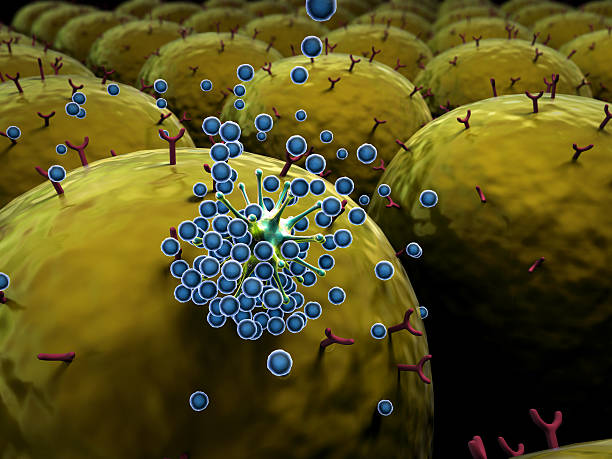Lipolysis is the biological process by which triglycerides (fat molecules) are broken down into their constituent components, namely glycerol and fatty acids. This process is a crucial part of the body’s energy metabolism and is especially important when the body needs to access stored fat for energy production.
Lipolysis primarily takes place in adipose tissue, which is also known as fat tissue. Adipose tissue is found throughout the body, with the most significant deposits typically located under the skin (subcutaneous fat) and around internal organs (visceral fat). Lipolysis is regulated by hormones such as adrenaline (epinephrine), norepinephrine, and various other signaling molecules. When the body needs additional energy, these hormones signal the adipose tissue to release fatty acids into the bloodstream, where they can be transported to cells throughout the body and used for energy production.
The fatty acids released during lipolysis can be further broken down through a process called beta-oxidation, which occurs primarily in the mitochondria of cells. This breakdown of fatty acids ultimately generates adenosine triphosphate (ATP), the body’s primary energy currency. Lipolysis is an essential process for providing energy during times of fasting, exercise, or when there is a caloric deficit, as it allows the body to utilize stored fat as an energy source.

Where does lipolysis and Lipogenesis occur?
Lipolysis and lipogenesis are two opposing processes related to the metabolism of fats in the body, and they occur in different tissues and cellular compartments:
- Lipolysis:
- Lipolysis is the process of breaking down triglycerides (fat molecules) into glycerol and fatty acids for energy production. It primarily occurs in adipose tissue, which is the body’s fat storage tissue.
- In adipose tissue, lipolysis is regulated by hormones such as adrenaline (epinephrine) and norepinephrine, which are released in response to various signals, including stress and the need for energy.
- Once triglycerides are broken down into glycerol and fatty acids in adipose tissue, the fatty acids can be released into the bloodstream and transported to other tissues, such as muscle cells, where they can be used for energy through a process called beta-oxidation.
- Lipogenesis:
- Lipogenesis is the process of synthesizing new fat molecules (triglycerides) from simpler precursors, such as glucose and fatty acids. It occurs primarily in the liver and adipose tissue.
- In the liver, lipogenesis is essential for converting excess dietary carbohydrates and other substrates into triglycerides for storage. These stored triglycerides can later be broken down through lipolysis when the body needs energy.
- In adipose tissue, lipogenesis also occurs, but it mainly involves the storage of excess energy as fat. When you consume more calories than your body needs, the excess energy is converted into triglycerides and stored in adipose tissue for later use.
In summary, lipolysis primarily takes place in adipose tissue, where stored triglycerides are broken down into glycerol and fatty acids for energy production. Lipogenesis occurs in the liver and adipose tissue, where new triglycerides are synthesized from various substrates and excess energy is stored as fat. These two processes are tightly regulated to maintain energy balance in the body.
What happens to fat after lipolysis
- Glycerol:
- Glycerol is one of the products of lipolysis. It is a three-carbon compound that can be further metabolized by the liver. In the liver, glycerol can be converted into glucose through a process called gluconeogenesis. Glucose can then be released into the bloodstream and used by the body’s cells for energy or stored as glycogen in the liver and muscles.
- Fatty Acids:
- Fatty acids, which are the other product of lipolysis, are transported through the bloodstream bound to proteins called albumin to various tissues throughout the body, including muscle cells and the liver.
- In muscle cells, fatty acids can be used as an energy source through a process called beta-oxidation. This process breaks down fatty acids into acetyl-CoA molecules, which enter the citric acid cycle (Krebs cycle) to generate ATP, the body’s primary energy currency.
- In the liver, fatty acids can be used for energy production, converted into other lipid molecules, or packaged into lipoproteins for transport to other tissues. The liver can also perform the process of de novo lipogenesis, where it synthesizes new triglycerides from excess glucose and fatty acids, which can then be stored or transported for energy use.
The fate of the fatty acids and glycerol released during lipolysis depends on the body’s energy needs, the availability of other substrates (such as glucose), and the metabolic state of the individual. When the body requires energy, fatty acids are often oxidized for ATP production. When there is an excess of glycerol or fatty acids, they can be stored as triglycerides in adipose tissue for future energy use. Additionally, the liver plays a central role in regulating these processes to maintain energy balance in the body.
